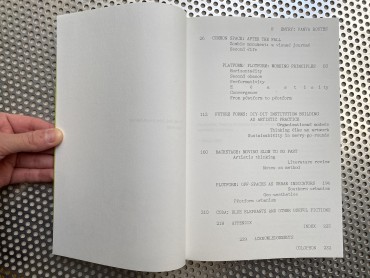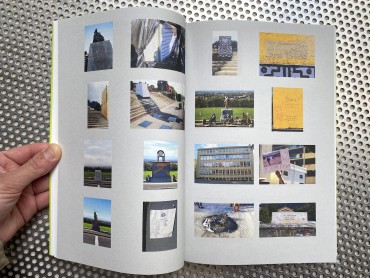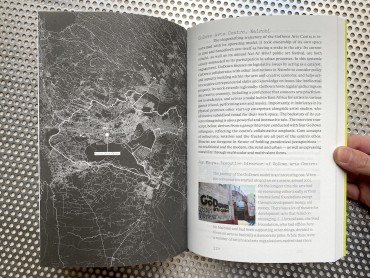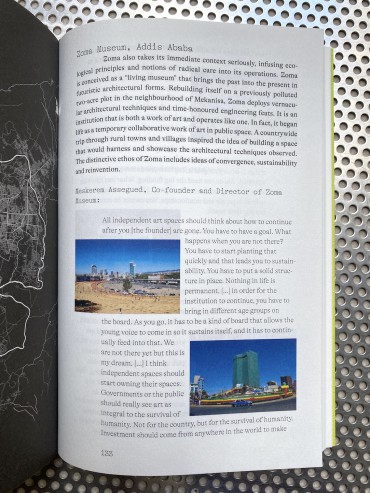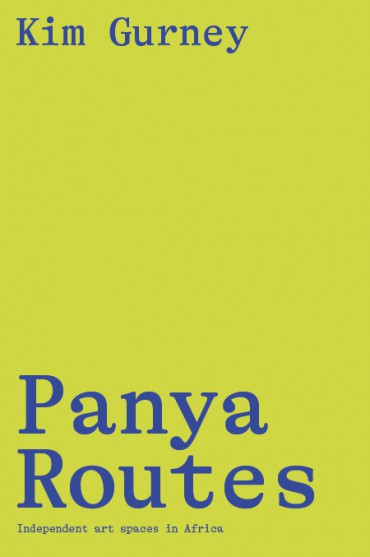
Panya Routes
Independent art spaces on the African continent have flourished, particularly over the past twenty years in tandem with a youthful population in fast-urbanising cities.
This book takes the reader on a journey to discover their DIY-DIT working principles: horizontality, second chance, elasticity, performativity and convergence. The itinerary begins at an empty plinth in Cape Town to closely track the performative and artistic afterlife of a colonialist statue whose toppling turned public space into common space. Next stop: Nairobi, Accra, Cairo, Addis Ababa and Dar es Salaam — all rapidly changing cities of flux. The author visits five non-profit platforms that build narratives in public space by stitching together art and everyday life. They create their own panya routes, or backroad infrastructures of divergent kinds, in response to prevailing uncertainty. Working largely in collaborative economies and solidarity networks through refusal and reimagination, these “off-spaces” demonstrate institution building as artistic practice. By thinking and dreaming beyond the status quo, they fast-forward to creatively inhabit city futures that have already arrived in the global South. The key platforms featured in the book’s research are: The GoDown Arts Centre, ANO Institute of Arts and Knowledge, Townhouse Gallery, Zoma Museum and Nafasi Art Space.
Kim Gurney (PhD) is a writer, visual artist and Research Associate at the African Centre for Cities, University of Cape Town. She is the author of two other books linking art and city life: August House is Dead, Long Live August House! The Story of a Johannesburg Atelier (Fourthwall Books, 2017) and The Art of Public Space: Curating and Re-imagining the Ephemeral City (Palgrave Macmillan, 2015). Gurney lives and works in Cape Town, South Africa.

